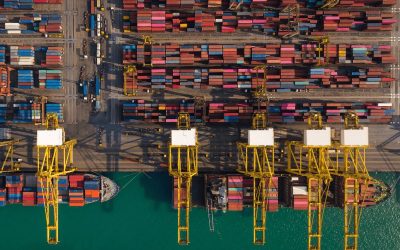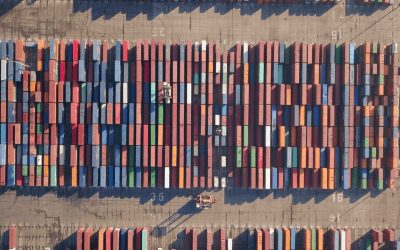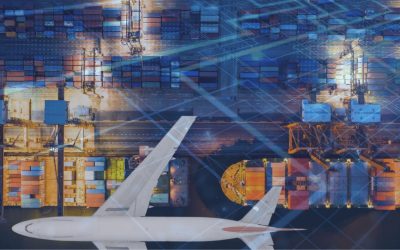Navigating the complexities of customs clearance is essential for ensuring smooth international shipments.
Customs clearance is a mandatory procedure that allows goods to cross international borders in compliance with the destination country’s import regulations. Businesses must ensure their shipments adhere to local import laws, whether importing consumer electronics, audiovisual equipment, or satellite components. This process involves verifying documentation, assessing applicable duties and taxes, and sometimes conducting physical inspections.
The Role of Customs Clearance in International Imports
Mastering the complexities of customs clearance is imperative for companies engaged in global trade. A single documentation mistake—such as a missing invoice or an inaccurate declaration—can result in costly delays, penalties, or even the seizure of goods. Industry leaders like Aerodoc have developed robust physical inspection systems to mitigate these risks, offering importers a seamless customs experience.
When and Why Is Customs Clearance Required?
Customs clearance is mandatory for all international shipments, regardless of the shipment’s size or nature. The primary goals of this process include:
- Regulating the movement of goods across borders
- Ensuring the collection of duties, taxes, and tariffs that contribute to national revenue
- Preventing illegal trade and ensuring compliance with local laws
Customs Clearance: Do All Shipments Undergo Physical Customs Inspections?
While every shipment must go through customs clearance, not all shipments are subject to physical inspection. Customs authorities rely on documentation, electronic declarations, and risk assessment systems to determine which shipments require further scrutiny.

Several factors may trigger a customs inspection, including:
- Discrepancies in declared value or documentation
- High-value or sensitive goods
- Products subject to stringent import controls, such as pharmaceuticals, electronics, or regulated commodities
By proactively ensuring accurate documentation and compliance with import regulations, businesses can minimize disruptions and expedite the customs clearance process, facilitating seamless global trade operations.
Customs Clearance: Ensuring Compliance and Efficiency in International Logistics
Aerodoc’s Physical Inspection System ensures that all shipments seamlessly comply with customs regulations. This comprehensive process verifies that each shipment meets the specific customs clearance requirements, minimizing risks and maximizing logistical efficiency.
Below, we outline the six key stages that define this innovative system:
1. Reception: Pre-Processing and Documentation Review
The first stage of the system begins before the shipment arrives at Aerodoc’s warehouse. This preliminary step, known as reception, includes pre-processing essential documentation, such as invoices, packing lists, and certificates required by the destination country’s customs authorities. This process allows Aerodoc to:
- Identify potential mistakes in the documentation before the shipment enters the logistics chain.
- Ensure all necessary information is readily available for subsequent stages, expediting the overall process.
- Coordinate with the customer to address any additional requirements during transit.
2. Inbound Verification: Physical Inspection and Electronic Registration
Upon arrival at Aerodoc’s warehouse, a thorough physical verification of the received goods is conducted. Handheld scanners are used to electronically log each item into the system, cross-checking it against the information provided by the customer. This step ensures that:
- The physical items match the invoice or packing list submitted.
- Any discrepancies or anomalies are immediately detected and reported to the customer for resolution.
- Shipments are electronically registered, enabling real-time tracking.
3. Physical Inspection Count
The physical inspection count is one of the foundational pillars of Aerodoc’s system. The team creates a detailed inventory using the original invoices or packing lists during this stage. This meticulous procedure ensures:
- All declared items are present and in proper condition.
- Typical errors, such as incorrect descriptions or inaccurate quantities, are identified and corrected.
- Issues that could arise during customs inspections at the destination country are proactively avoided.
This stage is particularly essential in countries with stringent customs regulations, where discrepancies may result in penalties or cargo holds.
4. Digital Imaging: Visual Documentation of Shipments
The fourth stage focuses on capturing detailed images of the goods, providing visual evidence of the shipment’s condition, and documenting all necessary information. This step is essential in two primary scenarios:
- Cargo incidents: If the goods arrive damaged, the images serve as evidence for claims against the carrier or supplier.
- Destination country requirements: Some countries mandate visual documentation of shipments for customs clearance.
By integrating this step, Aerodoc helps prevent delays and losses at the final destination, as images facilitate swift identification and condition verification of the goods.
5. Findings Report: Qualitative and Quantitative Analysis
After completing the previous steps, Aerodoc generates a Findings Report that provides a detailed qualitative and quantitative shipment analysis. This report includes:
- A comparison between the provided documentation and the actual condition of the cargo.
- Identifying discrepancies that may affect customs clearance, such as errors in declared values, incorrect part numbers, or missing information.
- Immediate solutions to resolve any issues before the shipment is dispatched to its final destination.
This report helps mitigate additional costs related to customs penalties or last-minute corrections, ensuring a smooth clearance process.
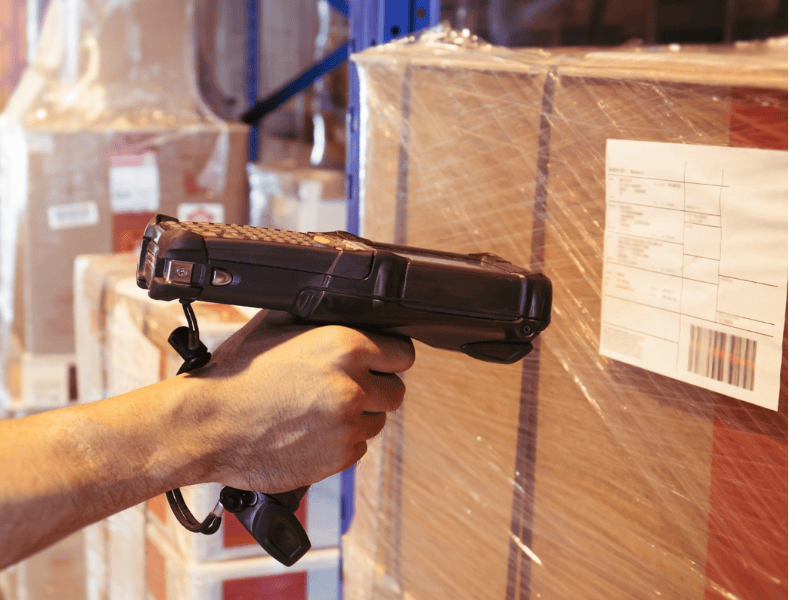
6. Repackaging for International Shipments
The final stage of the system involves repackaging the goods to ensure their safety during international transport and compliance with the destination country’s regulations. This process includes:
- Adding the necessary labeling for customs clearance.
- Ensuring the packaging meets international shipping standards and protects the goods from potential damage.
- Make adjustments if the original packaging is unsuitable for transportation or storage.
Beyond safeguarding the goods, repackaging also streamlines customs clearance by ensuring all items are correctly identified and documented.
Customs Clearance: How to Properly Declare the Value of Your Shipment
Accurately declaring the value of your shipment is vital for a smooth customs clearance process. Incorrect declarations can lead to severe penalties, shipping delays, or even accusations of fraud. To ensure compliance and accuracy, follow these key guidelines:
- Provide Detailed Invoices: Include clear item descriptions, quantities, unit prices, and total values.
- Account for Additional Costs: If applicable, incorporate costs such as shipping, insurance, and handling in the declared value.
- Use Accurate Currency Conversion: Ensure that all values are reported in the required currency of the destination country.
- Leverage Physical Inspection Audits: Aerodoc’s Physical Inspection Count ensures that declared values align with shipment contents.
Customs Clearance: How Tariffs Impact the Cost of Imported Goods
One of the biggest challenges for importers is managing tariff costs, which are taxes imposed on imported goods. Tariffs vary by country, product category, and trade agreements, influencing the final price of imported items. For example:
- High tariffs on certain electronic products can increase the cost of imported goods compared to domestically manufactured alternatives.
- Free trade agreements like Mercosur in South America may reduce or eliminate tariffs for specific goods.
Understanding and calculating these costs is essential for businesses operating in international markets. Companies like Aerodoc assist customers by precisely calculating tariffs and integrating them into cost forecasts, ensuring transparency and preventing unexpected expenses.
Customs Clearance: Requirements Across Different Countries
Customs clearance is a vital component of international trade, and inspections are a key mechanism for ensuring security, legal compliance, and operational transparency. While each country has its regulatory framework, global organizations like the World Customs Organization (WCO) and the United Nations promote standardized, efficient, and accessible controls to facilitate safe and sustainable cross-border trade.

The WCO has established a global framework with 15 key benchmarks to enhance customs inspections. These standards emphasize using advanced electronic data for risk management and expedited processing. Among the most notable technologies is Non-Intrusive Inspection (NII), which employs X-ray and gamma-ray scanning to examine goods without physically opening containers.
Customs Clearance: The Traffic Light System
Many customs agencies employ the Traffic Light System to classify shipments based on risk levels, assigning an inspection channel (Green, Yellow, Orange, Red, or Gray) based on documentation, importer/exporter history, and other shipment-related factors. Below is an overview of each channel:
-
Green Channel
- Characteristics: The most favorable pathway for international trade, allowing shipments to clear quickly with minimal physical inspection.
- Requirements: Documentation must be complete and in order. Some shipments may undergo NII screening but remain within standard processing guidelines.
- Advantages: Reduced costs and shorter processing times, facilitating a streamlined supply chain.
-
Yellow Channel
- Characteristics: Applied to shipments with incomplete or insufficient documentation or certifications.
- Process: Deficiencies can typically be resolved by submitting the missing documents. Once corrected, the shipment will be moved to the Green Channel.
- Impact: Minor delays, provided the company addresses the required documentation promptly.
-
Orange Channel
- Characteristics: Requires a comprehensive document review by customs authorities.
- Process: Authorities verify inconsistencies in values, origins, or destinations. If doubts persist, a physical inspection may be ordered.
- Disadvantages: Significant delays that may impact delivery timelines and logistics planning.
-
Red Channel
- Characteristics: Shipments in this category are subject to complete physical inspections.
- Impact: This process increases costs and time, as businesses must cover associated fees and may face fines.
- Repercussions: Companies with repeated shipments in the Red Channel may attract heightened scrutiny in future transactions.
-
Gray Channel
- Characteristics: This channel is similar to the Red Channel but specifically designated for cases suspected of fraud, such as incorrect declared values.
- Impact: Involves in-depth document and merchandise inspections, with the potential for severe penalties if irregularities are detected.
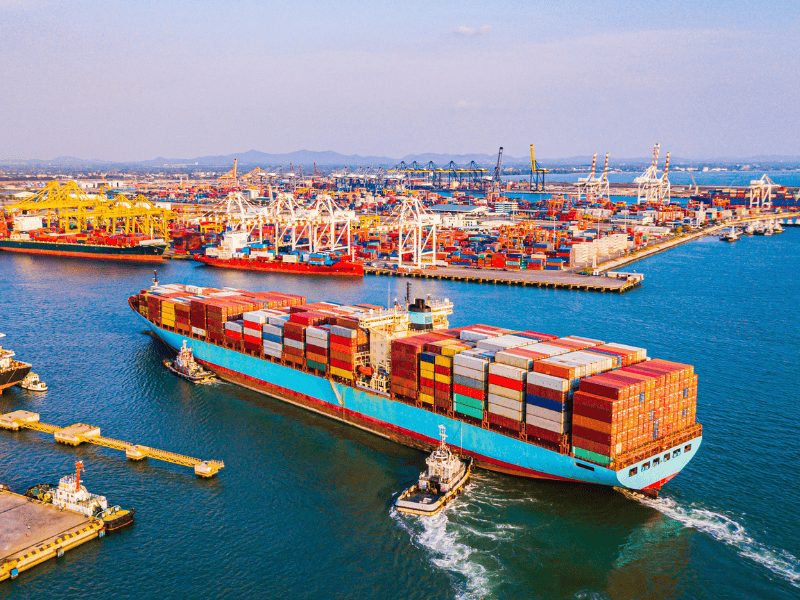
Key Steps to Ensure a Successful Customs Clearance
Achieving a successful customs clearance requires expertise and attention to detail. The following are the most crucial steps:
- Accurate Documentation: Review invoices, packing lists, and certificates to prevent errors or omissions.
- Regulatory Compliance: Stay informed about import regulations and any changes that could impact your shipment.
- Pre-Shipment Inspections: Aerodoc’s Physical Inspection System ensures that shipments meet all regulatory requirements before leaving the warehouse.
- Proper Labeling and Packaging: Incorrect labeling or insufficient packaging can cause delays or damages during transportation.
- Partnering with Reliable Logistics Providers: Working with experienced customs brokers and logistics providers minimizes the risk of errors and ensures smoother processing.
Customs Clearance: Considerations When Partnering with an Import Specialist
Navigating the complexities of customs inspections, documentation, and tariffs helps minimize risks and optimize resources. Solutions like Aerodoc’s Physical Inspection System enable seamless import processes across more than 172 countries.
With over 25 years of experience, Aerodoc specializes in technology. It supports the international expansion of technology resellers, data centers, broadcasting companies, satellite firms, and audio-video integrators.
Contact us to learn more about Aerodoc’s services.
Q&A
- What is customs clearance, and why is it essential for international shipments? Customs clearance is a mandatory procedure that allows goods to cross international borders in compliance with local import regulations. It ensures that duties and taxes are collected, prevents illegal trade, and facilitates smooth global transactions.
- What factors can trigger a physical inspection during the customs clearance process? Several factors can lead to a physical customs inspection, including discrepancies in documentation, high-value shipments, and goods subject to strict import regulations, such as pharmaceuticals or electronics.
- How does Aerodoc’s Physical Inspection System optimize the customs clearance process? Aerodoc streamlines customs clearance through a six-stage system, including pre-processing documentation, physical verification, digital imaging, and findings reports. This approach helps correct discrepancies before shipment, minimizing delays and ensuring compliance.
- How do tariffs influence the cost of customs clearance for imported goods? Tariffs are taxes imposed on imports that affect the overall cost of customs clearance. They vary by country and product category and can potentially increase costs. However, trade agreements like Mercosur may reduce or eliminate tariffs for specific goods.
- What is the Traffic Light System, and how does it affect customs clearance? The Traffic Light System classifies shipments based on customs clearance risk levels: Green Channel: Quick clearance with minimal inspection. Yellow Channel: Requires additional documentation review. Orange Channel: Detailed document verification and potential physical inspection. Red Channel: Full physical inspection, leading to longer delays.Gray Channel: In-depth scrutiny for suspected fraud cases.


